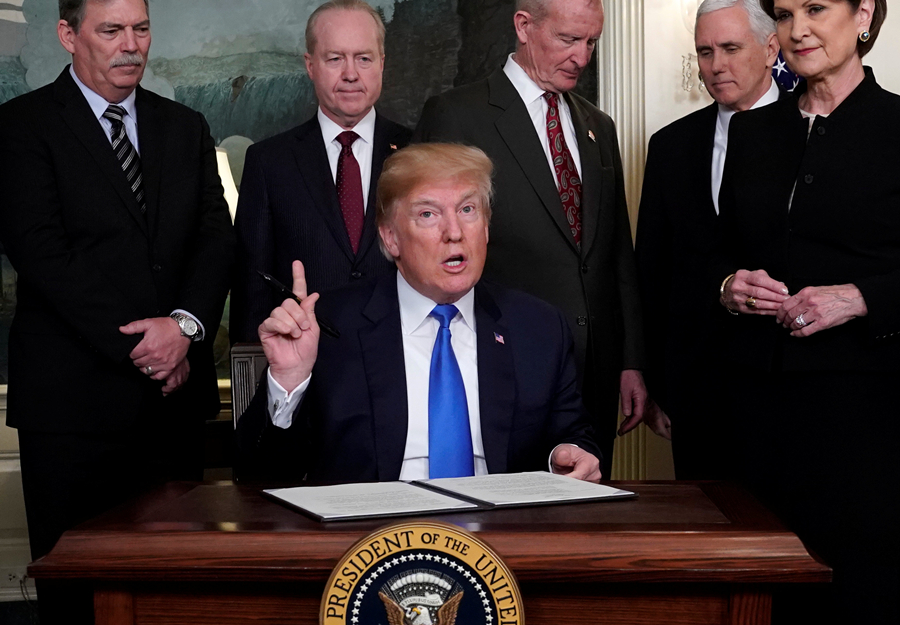Trump’s trade war will not leave US unscathed
chinadaily.com.cn | Updated: 2018-03-23 17:37

“Pull back from the brink” is the stern advice China gave to the US administration after Donald Trump signed an executive memorandum on Thursday imposing restrictive tariffs of up to $60 billion on Chinese imports and restricting Chinese investments in the US.
China’s initial response, although measured, signals the escalation of a trade dispute triggered by the protectionist-minded US administration prone to taking unilateral decisions. The Chinese embassy in Washington warned that “China would fight to the end to defend its own legitimate interests with all necessary measures”.
That China’s reciprocal measures will be taken in two stages leaves room for further negotiation and dialogue to resolve the trade disputes between the world’s two largest economies, in order to avoid a trade war, which would disrupt the on-going recovery of the global economy.
“China doesn’t hope to be in a trade war, but is not afraid of engaging in one,” the Ministry of Commerce said in a statement. “China hopes the United States will pull back from the brink … and avoid dragging bilateral trade relations to a dangerous place.”
Washington would do good to heed Beijing’s advice, because a trade war would hurt China, but not leave the US unscathed if China retaliates. According to economists’ calculation, a trade war may slow down US economic growth, raise consumer goods prices, and increase unemployment, especially in the Rust Belt, contrary to Trump’s claim that American jobs would be protected because of trade actions against China.
According to a University of Pennsylvania study, a full-blown trade war would, over time, offset any gains of economic growth from the US’ newly implemented tax cuts; it would also eliminate a year’s worth of wage growth.
By taking punitive trade measures under the outdated Section 301 of the US Trade Act of 1974 against its major trade partner on the pretext that “unfair” trade activities have hurt US interests, the Trump administration may be hoping to woo voters in the mid-term election this year. But when voters realize that, instead of being protected, their interests have been undermined, Trump’s stratagem will backfire.
Trump cannot lower the US’ colossal trade deficits with its major trade partners by imposing higher tariffs on imports, since the root cause of the problem is the ultra-low savings rates of Americans and the international division of labor. For Trump, it is easier to blame other countries for the US’ problems and garner votes in the mid-term election, instead of taking the pain to restructure the country’s economy. He cannot force China to give in, however, because China knows the US’ demands are insatiable.
Trade disputes should be resolved through discussions and negotiations under the framework of the World Trade Organization, not by unilaterally imposing tariffs.
Unilateral and protectionist moves usually lead to tit-for-tat trade retaliations, which today will disrupt the global trade and economic growth. But during his 14 months in office, the US president has cared little for multilateral trade.
Perhaps it’s time to remind Trump that in the early years of the 20th century, the US initiated protectionist trade measures to protect its domestic industries, forcing its trade partners to take similar measures, which resulted in a sharp contraction of global trade and economic growth. History does not repeat itself but only if we learn the right lesson from it.
By imposing harsh and unjustified restrictive tariffs on its trade partners, the US risks dragging the world into another destructive trade war, whose fires will also scald the US.
























